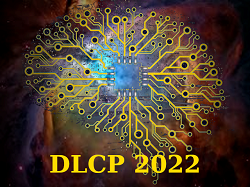Speaker
Description
The GRAPES-3 experiment located in Ooty consists of a dense array of 400 plastic scintillator detectors spread over an area of 25,000 $m^2$ and a large area (560 $m^2$) tracking muon telescope. Everyday, the array records about 3 million showers in the energy range of 1 TeV - 10 PeV induced by the interaction of primary cosmic rays in the atmosphere. These showers are reconstructed in order to find several shower parameters such as shower core, size, and age. High-energy showers landing far away from the array often trigger the array and are found to have their reconstructed cores within the array even though their true cores lie outside, due to reconstruction of partial information. These showers contaminate and lead to an inaccurate measurement of energy spectrum and composition. Such showers can be removed by applying quality cuts on various shower parameters, manually as well as with machine learning approach. The improvements achieved by the use of machine learning will be presented.
| Agreement to place | Participants agree to post their abstracts and presentations online at the workshop website. All materials will be placed in the form in which they were provided by the authors |
|---|

